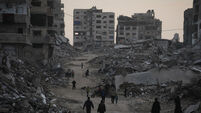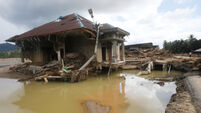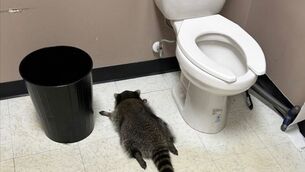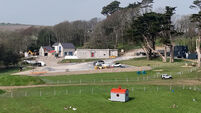Nuclear watchdog 'worried' by activity at Iraqi sites
The United Nations nuclear watchdog expressed concern today at the removal of equipment and ”significant dismantling” at 37 key sites in Iraq previously monitored for potential nuclear activity.
In a letter to the UN Security Council, the head of the International Atomic Energy Agency also said satellite imagery has revealed that at least one site where contaminated rubble from Saddam Hussein’s nuclear programme had been buried has been extensively excavated.
IAEA director general Mohamed ElBaradei said these assessments “need to be followed up through verification in Iraq in order for the agency to draw conclusions”.
ElBaradei’s six-month report to the council said IAEA inspectors are ready to resume verification in Iraq if directed by the council and made clear there were many sites to look at.
Since 2003, ElBaradei said, the IAEA has analysed satellite imagery of 141 of the 175 locations it previously identified as primary sites that contributed to Saddam’s clandestine nuclear programme, or had technical capabilities to restart a nuclear programme. Analysts were looking for changes in the infrastructure of the sites, he said.
“This assessment has revealed significant dismantling and removal activities at 37 of the most capable sites since March 2003,” he added.
The IAEA also focused on sites where wrecked equipment from Iraq’s former nuclear programme had been stored or discarded, he said.
Getting UN nuclear inspectors back into Iraq remains a problem.
IAEA inspectors left Iraq just before the March 2003 US-led war, along with inspectors searching for biological and chemical weapons.
The Bush administration then barred all UN inspectors from returning, deploying US teams instead in what turned out to be an unsuccessful search for Iraqi weapons of mass destruction.
Nonetheless, IAEA teams were allowed into Iraq in June 2003 to investigate reports of widespread looting of storage rooms at the main nuclear complex at Tuwaitha, and in August 2004 to take an inventory of “several tons” of natural uranium in storage near Tuwaitha.
The Iraqi government has been campaigning to stop using Iraqi oil revenue to pay the UN weapons inspectors, calling them “irrelevant” and costly.
ElBaradei also expressed concern in his last report in October at the disappearance of high-precision equipment that could be used to make nuclear weapons.
In late October, ElBaradei released an Iraqi report on the disappearance of 377 tons of high explosives from the al-Qaqaa site south of Baghdad, including HMX which can be used to ignite a nuclear weapon.
Investigations were promised, but ElBaradei said in today’s report that “to date, IAEA has received no additional information that could shed light on this matter”.














